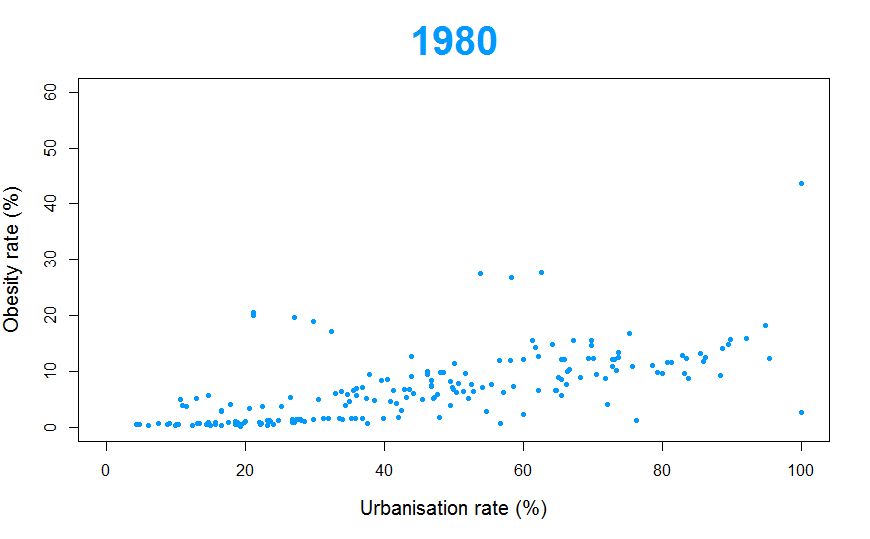Hypothesis
Our hypothesis is that the higher the degree of urbanization the higher is the obesity/overweight rate of a country. More and more people are seeking well paid jobs in cities as time progresses. Urbanisation is when people from the countryside move to cities or agglomerations. The ratio of people living in cities increases from year to year.
Our assumption is that countries with a high urbanization rate, also have more obese adults. To show the results, we created a Shiny app.
Obesity is defined with having a BMI of over 30. Food is easier and more abundant available in cities. This includes healthy as well as unhealthy foods, such as fast food.



